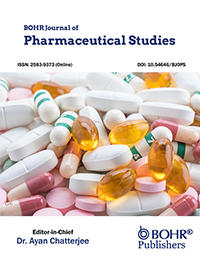Polymer Paradigm: Revolutionizing Drug Delivery
Main Article Content
Abstract
The present review paper addresses using different polymers to deliver medicinal drugs. It deals with different forms of dosage like tablets, films, patches, semi-solids, tapes, powders, etc. It also discussed dyslipidemia and the management of statins, binding resins, and niacin for lowering LDL-cholesterol levels; and fibrates for reducing triglycerides while raising HDL cholesterol. It focused on the polymers that have been used in drug delivery systems for example natural polymers like chito, alginate, collagen, etc. and synthetic polymers like polyethylene glycol, poly (vinyl alcohol) or PVA in addition to their advantages, mechanism of action with their recent development. Drug-delivery systems (DDS) are based on polymers—they determine how drugs are released from the drug-delivery devices. Recent advances in polymer science have led to a wide variety of novel drug-delivering systems. Polymer-based DDS has revolutionized medical therapy by enabling precise regulation of drug release and targeting. The advancement of polymer science has specifically led to the fabrication of many new drug delivery systems. Polymer-based DDS has proven to be the favorite choice in drug-delivery systems providing controlled and targeted built-in control over drug release. However, many aspects are yet to be covered. Polymer science has seen a lot of development in the field with various innovative drug-delivery systems developed over time. The polymer-based DDS changed radically existing therapeutic strategies because it gives control of the drug release and delivery. Polymers are commonly used as biomedical implants and have been long-lived. Since the onset of action is fast, rapid dissolving polymers are often used to create oral dispersing films and nanoparticles. These advancements increase the effectiveness of treatments and minimize unwanted side effects or other issues for patients.
Downloads
Article Details

This work is licensed under a Creative Commons Attribution 4.0 International License.
Authors retain copyright and grant the journal right of first publication with the work simultaneously licensed under a Creative Commons Attribution 4.0 International License that allows others to share the work with an acknowledgment of the work’s authorship and initial publication in this journal.
This has been implemented from Jan 2024 onwards



